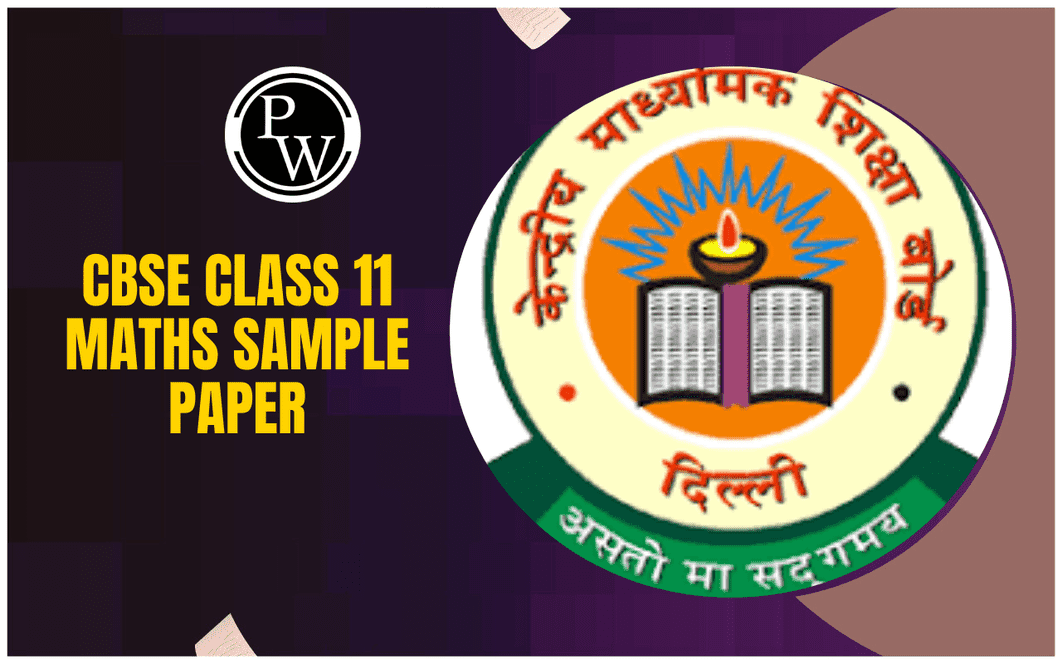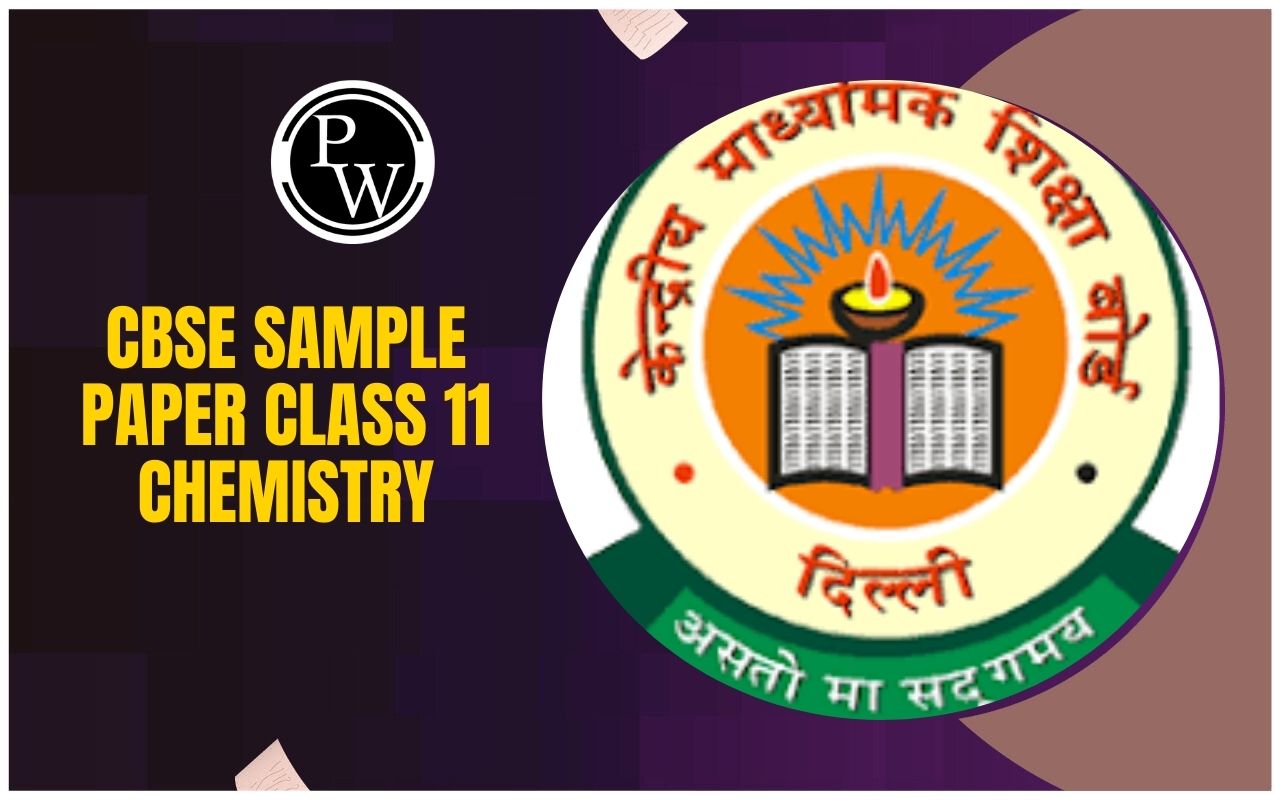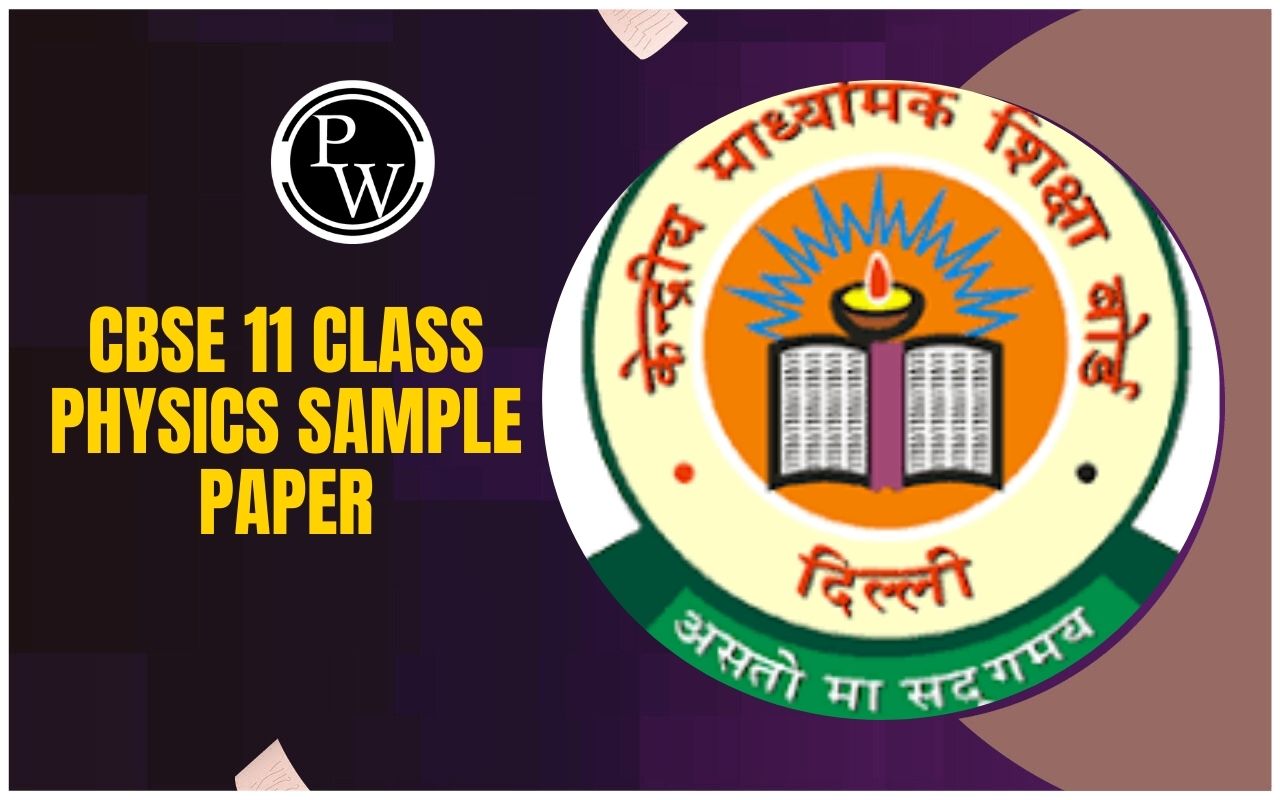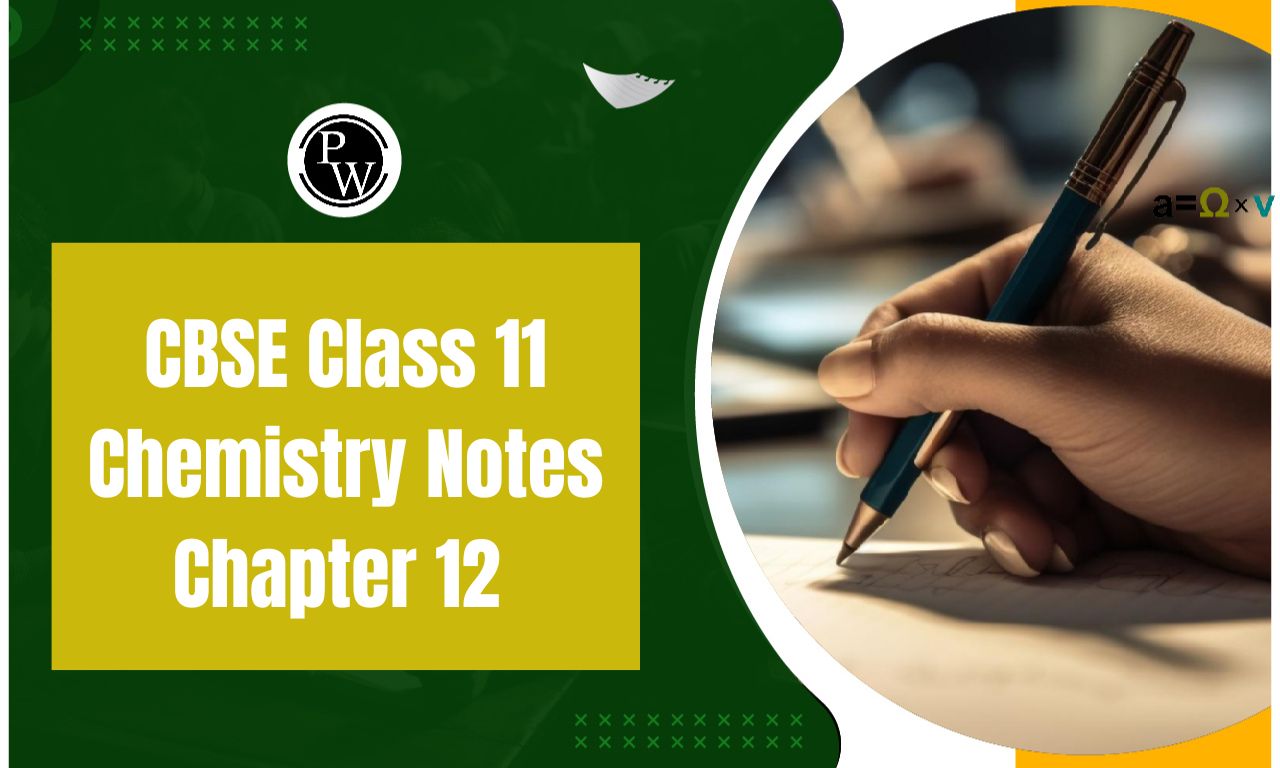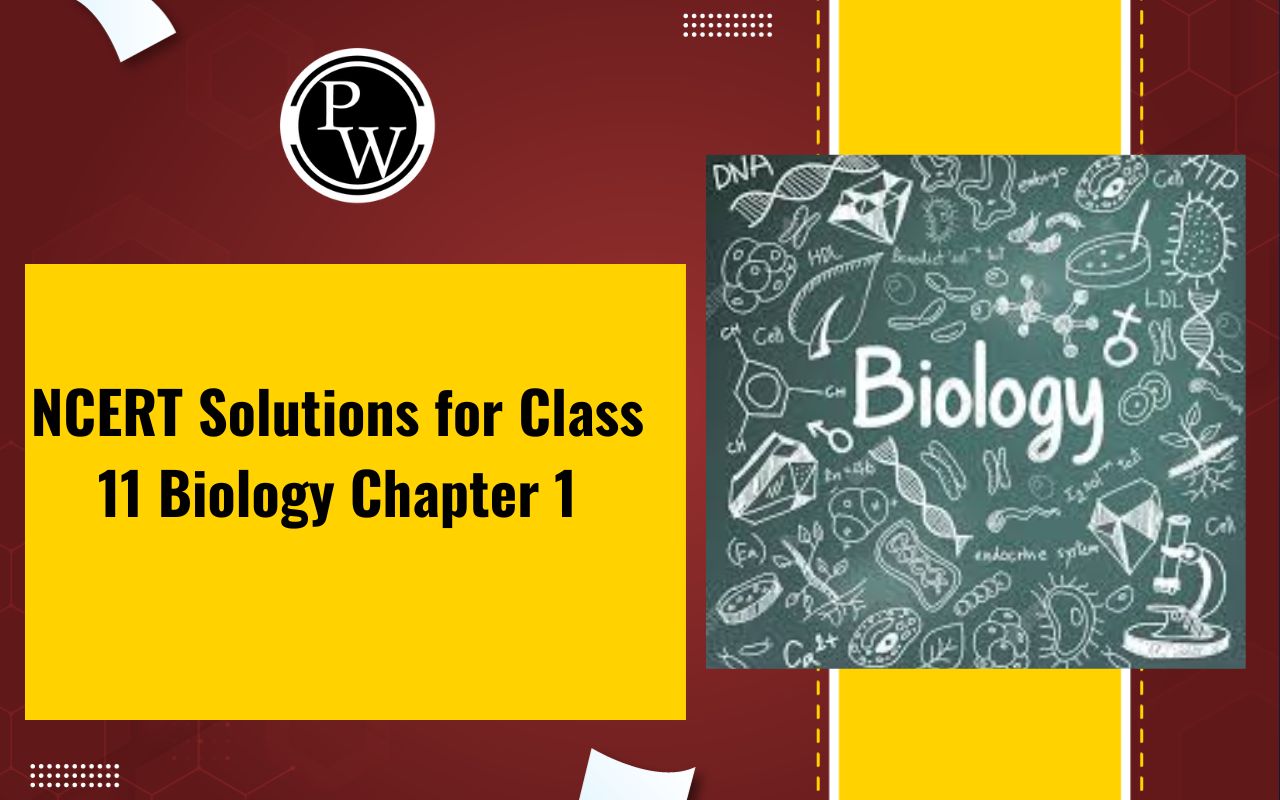
CBSE Class 11 Maths Syllabus 2025-26: The Central Board of Secondary Education (CBSE) has officially released the Class 11 Maths syllabus for the academic year 2025-26.
The updated syllabus outlines all the topics and chapters that students need to study throughout the year. It includes units such as Sets, Relations and Functions, Trigonometric Functions, Complex Numbers, Linear Inequalities, Permutations and Combinations, and more.
CBSE Class 11 Maths Syllabus 2025-26
The CBSE Class 11 Syllabus 2025-26 includes the following topics:Trigonometry Applications: This section examines how trigonometry may be used to solve triangle and circle problems.
CBSE Class 11 Maths Syllabus 2025-26 Marking Scheme
Students study day and night to do well in the CBSE Class 11 exams, but without understanding the curriculum, it is hard to do well. As a result, we have provided a complete CBSE Class 11 Maths Syllabus 2025-26.Students must consult the CBSE Class 11 Maths Syllabus 2025-26 and completely evaluate the chapters as well as the marking system to organise their study schedule so that they may devote more time to the chapters carrying the most marks.
| CBSE Class 11 Maths Syllabus 2025-26 | ||
| S.No. | Units | Marks |
| I. | Sets and Functions | 23 |
| II. | Algebra | 25 |
| III. | Coordinate Geometry | 12 |
| IV. | Calculus | 08 |
| V. | Statistics and Probability | 12 |
| Total | 80 | |
| Internal Assessment | 20 | |
| Grand Total Marks | 100 | |
CBSE Class 11 Maths Syllabus 2025-26 Question paper design
The table consists of question paper design of CBSE Class 11 Maths Syllabus 2025-26| CBSE Class 11 Maths Syllabus 2025-26 Question paper design | ||
| Typology of Questions | Total Marks | % Weightage |
| Remembering: Exhibit memory of previously learned material by recalling facts, terms, basic concepts, and answers. Understanding: Demonstrate understanding of facts and ideas by organizing, comparing, translating, interpreting, giving descriptions, and stating main ideas. | 44 | 55 |
| Applying: Solve problems in new situations by applying acquired knowledge, facts, techniques, and rules in a different way. | 20 | 25 |
| Analyzing: Examine and break information into parts by identifying motives or causes. Make inferences and find evidence to support generalizations. Evaluating: Present and defend opinions by making judgments about information, validity of ideas, or quality of work based on a set of criteria. Creating: Compile information together in a different way by combining elements in a new pattern or proposing alternative solutions. | 16 | 20 |
| TOTAL | 80 | 100 |
CBSE Class 11 Maths Syllabus 2025-26 Unit-wise syllabus
The table below consists of CBSE Class 11 Maths Syllabus 2025-26.| CBSE Class 11 Maths Syllabus 2025-26 Unit-wise syllabus | ||
| Unit | Name | Description |
| 1 | Sets and Functions | 1. Sets Sets and their representations, Empty sets, Finite and Infinite sets, Equal sets, Subsets, and Subsets of a set of real numbers especially intervals (with notations). Universal set. Venn diagrams. Union and Intersection of sets. Difference of sets. Complement of a set. Properties of Complement. 2. Relations & Functions Ordered pairs. Cartesian product of sets. Several elements in the Cartesian product of two finite sets. Cartesian product of the set of reals with itself (up to R x R x R).Definition of relation, pictorial diagrams, domain, co-domain and range of a relation. Function as a special type of relation. Pictorial representation of a function, domain, co-domain and range of a function. Real valued functions, domain and range of these functions, constant, identity, polynomial, rational, modulus, signum, exponential, logarithmic and greatest integer functions, with their graphs. Sum, difference, product and quotients of functions. 3. Trigonometric Functions Positive and negative angles. Measuring angles in radians and degrees and conversion from one measure to another. Definition of trigonometric functions with the help of unit circle. The truth of the identity sin2x + cos2x = 1, for all x. Signs of trigonometric functions. Domain and range of trigonometric functions and their graphs. Expressing sin (x±y) and cos (x±y) in terms of sex, siny, cost & cosy and their simple applications. |
| 2 | Algebra | 1. Complex Numbers and Quadratic Equations Need for complex numbers, especially √−1, to be motivated by the inability to solve some of the quadratic equations. Algebraic properties of complex numbers. Argand plane 2. Linear Inequalities Linear inequalities. Algebraic solutions of linear inequalities in one variable and their representation on the number line. 3. Permutations and Combinations The fundamental principle of counting. Factorial n. (n!) Permutations and combinations, derivation of Formulae for nPr and nCr and their connections, simple applications. 4. Binomial Theorem Historical perspective, statement and proof of the binomial theorem for positive integral indices. Pascal’s triangle, simple applications. 5. Sequence and Series Sequence and Series. Arithmetic Mean (A.M.) Geometric Progression (G.P.), general term of a G.P., the sum of n terms of a G.P., infinite G.P. and its sum, geometric mean (G.M.), the relation between A.M. and G.M. |
| 3 | Coordinate Geometry | 1. Straight Lines Brief recall of two-dimensional geometry from earlier classes. The slope of a line and the angle between two lines. Various forms of equations of a line: parallel to the axis, point-slope form, slope-intercept form, two-point form, intercept form, and Distance of a point from a line. 2. Conic Sections Sections of a cone: circles, ellipses, parabolas, hyperbolas, a point, straight lines and a pair of intersecting lines as a degenerated case of a conic section. Standard equations and simple properties of parabola, ellipse and hyperbola. Standard equation of a circle. 3. Introduction to Three-dimensional Geometry Coordinate axes and coordinate planes in three dimensions. Coordinates of a point. Distance between two points. |
| 4 | Calculus | 1. Limits and Derivatives Derivative introduced as rate of change both as that of distance function and geometrically. The intuitive idea of limit. Limits of polynomials and rational functions trigonometric, exponential and logarithmic functions. The definition of derivative relates to the slope of the tangent of the curve, a derivative of the sum, difference, product and quotient of functions. Derivatives of polynomial and trigonometric functions. |
| 5 | Statistics and Probability | 1. Statistics Measures of Dispersion: Range, Mean deviation, variance and standard deviation of ungrouped/grouped data. 2. Probability Events; occurrence of events, ‘not’, ‘and’ and ‘or’ events, exhaustive events, mutually exclusive events, Axiomatic (set theoretic) probability, connections with other theories of earlier classes. Probability of an event, probability of ‘not’, ‘and’ and ‘or’ events. |
CBSE Class 11 Mathematics Deleted Syllabus 2025-26
Initially, there were six units in the CBSE Class 11 Maths Syllabus 2025-26, which has now been reduced to five. Certain chapters have been eliminated from the left unit. It would be difficult to grasp the omitted topics; so, we have simplified things for you. Check out the table below for a detailed breakdown of the units, chapters, and eliminated subjects. Keep this list with you while you prepare for your final examinations to avoid discussing subjects that may not be included in the tests.| CBSE Class 11 Mathematics Deleted Syllabus 2025-26 | ||
| Chapter No. | Chapter Name | Deleted Topics |
| Unit I: Sets and Functions | ||
| 1 | Sets | Power set |
| 2 | Relations & Functions | No Change |
| 3 | Trigonometric Functions | The general solution of trigonometric equations of the type in y = sin a, cos y = cos a and tan y = tan a. |
| Unit II: Algebra | ||
| 4 | Principle of Mathematical Induction | Complete Chapter |
| 5 | Complex Numbers and Quadratic Equations | Polar representation of complex numbers. Statement of Fundamental Theorem of Algebra, solution of quadratic equations (with real coefficients) in the complex number system. The square root of a complex number. |
| 6 | Linear Inequalities | Graphical solution of linear inequalities in two variables. Graphical method of finding a solution to a system of linear inequalities in two variables. |
| 7 | Permutations and Combinations | No Change |
| 8 | Binomial Theorem | General and middle term in binomial expansion |
| 9 | Sequence and Series | Arithmetic Progression, Sum to n terms of Special Series |
| Unit-III: Coordinate Geometry | ||
| 10 | Straight Lines | Intercept normal form. General equation of a line. Equation of family of lines passing through the point of intersection of two lines. |
| 11 | Conic Sections | No Change |
| 12 | Introduction to Three-dimensional Geometry | Section Formula |
| Unit-IV: Calculus | ||
| 13 | Limits and Derivatives | No Change |
| Unit-V: Mathematical Reasoning | ||
| 14 | Mathematical Reasoning | Complete Chapter |
| Unit-VI: Statistics and Probability | ||
| 15 | Statistics | Analysis of frequency distributions with equal means but different variances. |
| 16 | Probability | Random experiments; outcomes, sample spaces (set representation). |
This prevents students from acquiring irrelevant information. The topics, examples, and problems eliminated from the CBSE Class 11 Maths Syllabus 2025-26 textbook are listed here.
| Chapter | Deleted/Dropped Topics |
| Chapter 1: Sets | 1.7 Power Set, Exercise 1.3 Ques. 5 1.12 Practical Problems on Union and Intersection of Two Sets Exercise 1.6 Examples 31–34 and Ques. 6–7 (Miscellaneous Exercise) Ques. 13–16 (Miscellaneous Exercise), Last Point in the Summary on the Page Last Point in the Summary |
| Chapter 3: Trigonometric Functions | 3.5 Trigonometric Equations (up to Exercise 3.4) The last five points in the Summary 3.6 Proofs and Simple Applications of Sine and Cosine Formulae |
| Chapter 4: Principle of Mathematical Induction | Full Chapter |
| Chapter 5: Complex Number | 5.5.1 Polar Representation of a Complex Number 5.6 Quadratic Equation Example 11 and Exercise 5.3 Examples 13, 15, 16 Ques. 5–8, 9 and 13 (Miscellaneous Exercise) The last three points in the Summary 5.7 Square-root of a Complex Number |
| Chapter 6: Linear Inequalities | 6.4 Graphical Solution of Linear Inequalities in Two Variables 6.5 Solution of System of Linear Inequalities in Two Variables The last three points in the Summary |
| Chapter 8: Binomial Theorem | 8.3 General Middle Terms Example 17 and Ques. 1–3, and 8 (Miscellaneous Exercise) The last two points in the Summary |
| Chapter 9: Sequences and Series | 9.4 Arithmetic Progression (A.P.) (up to Exercise 9.2) 9.7 Sum to n terms of Special Series Examples 21, 22 and 24 Ques. 1–6, 12, 15, 16, 20, 23–26 (Miscellaneous Exercise) Points 3 and 4 in the Summary |
| Chapter 10: Straight Lines | 10.2.4 Collinearity of Three Points (Examples 4–5 and Ques. 8, 13–14 in Exercise 10.1) 10.3.6 Normal Forms Ques. 8 in Exercise 10.2 10.4 General Equation of a Line Ques. 3 in Exercise 10.3 Ques. 2 (Miscellaneous Exercise) Fourth Last Point in the Summary 10.6 Equation of Family of Lines Passing Through the Points of Intersection of Two Lines 10.7 Shifting of Origin |
| Chapter 11: Conic Sections | 11.5.2 Special Cases of an Ellipse |
| Chapter 12: Introduction to Three-Dimensional Geometry | 12.5 Section Formula Exercise 12.3 Ques. 4 and 5 (Miscellaneous Exercise), The last Three Points in the Summary |
| Chapter 14: Mathematical Reasoning | Full Chapter |
| Chapter 15: Statistics | 15.6 Analysis of Frequency Distribution Ques. 6 (Miscellaneous Exercise) and last point in the Summary) |
| Chapter 16: Probability | 16.1 Introduction 16.2 Random Experiment First Two Points in the Summary |
How to Download CBSE Class 11 Maths Syllabus 2025-26?
Students should take the following procedures to get the CBSE Class 11 Maths Syllabus 2025-26 as a PDF file:- CBSE academic.nic.in is the official website.
- Click on Curriculum to see the CBSE Class 11 Maths Syllabus 2025-26 link.
- Click on elective to get the CBSE Class 11 Maths Syllabus 2025-26 link.
- It will take you to the curriculum in PDF format.
- Download and save the CBSE Class 11 Maths Syllabus 2025-26 pdf.
Benefits of CBSE Class 11 Maths Syllabus 2025-26
The syllabus can help you choose the finest reference books for the topic.- The CBSE Class 11 Maths Syllabus 2025-26 advises students to create a study schedule and organise their studies by offering an outline of subjects and chapters.
- This 11th and 12th-grade curriculum is sufficient to reinforce the foundation for your graduation studies and allow you to sit for numerous examinations.
- The CBSE Class 11 Maths Syllabus 2025-26 informs applicants of the weightage of each area in the test, which helps in determining the key subjects.
CBSE Class 11 Maths Syllabus 2025-26 Download PDF
The CBSE Class 11 Maths Syllabus for the academic year 2025-26 is an important resource for students studying Maths. This syllabus outlines the topics and concepts that students will cover during the academic year.
Understanding the syllabus helps students plan their study schedule effectively, allocate time for each topic, and ensure comprehensive learning. With the PDF link provided below, students can easily download and refer to the CBSE Class 11 Maths Syllabus whenever needed. This allows students to stay organized, track their progress and prepare thoroughly for their Biology classes and examinations.
Do you need help with your homework or preparing for exams?
Study without using the internet
Benefits of CBSE Class 11 Maths Syllabus 2025-26
The syllabus can help you choose the finest reference books for the topic.
- The CBSE Class 11 Maths Syllabus 2025-26 advises students to create a study schedule and organise their studies by offering an outline of subjects and chapters.
- This 11th and 12th-grade curriculum is sufficient to reinforce the foundation for your graduation studies and allow you to sit for numerous examinations.
- The CBSE Class 11 Maths Syllabus 2025-26 informs applicants of the weightage of each area in the test, which helps in determining the key subjects.
CBSE Class 11 Maths Syllabus 2025-26 FAQs
Is CBSE 11 and 12 maths tough?
Which is the most difficult chapter in maths?
How can I pass 11th maths?
Which is the easiest chapter in Maths class 11?
What if I failed in maths in class 11?


